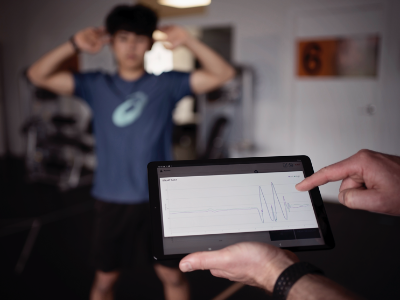I started running two and a half years ago and took it upon myself to make the Queenstown marathon my first race. Needless to say, starting from scratch and building up to 42km over five months with very little regard for rest and recovery led to injury. My first marathon was hindered by ITB syndrome and, unfortunately, I fractured my knee skiing prior to my second attempt a year later. I managed to complete the second attempt with 10 weeks of training, but it left me nursing a bone stress injury in my tibia for a year afterwards. I have certainly learnt the hard way about injury prevention in running and now feel passionate about sharing my learnings with patients.
One of the most frequent causes of injury we see in the clinic is athletes training at a level that their body is not conditioned for. For example, tendinopathies, patellofemoral pain, muscle strains and muscle tightness can all come about from placing a demand on the body which exceeds the supply. In addition, we often see athletes focusing on certain areas and neglecting others, and we have done this historically as physiotherapists too. For example, you may have frequently heard about your glute weakness and the impact this has on your alignment but, when it comes to running, is this the most important area to focus on?
Luckily, we have ever-emerging biomechanical research to improve the quality of our treatment. When it comes to running, studies have indicated that we may need to look further down the chain with running rehabilitation. In a study by Dorn et al. (2012) it was found that, at slower running speeds, the soleus muscle in the calf complex takes on the biggest role in running mechanics. This is followed by the hip flexors, quadriceps, and hamstrings. As running speed increases, so do the roles of the hamstrings and quadriceps, and these muscle groups take over the soleus at high speeds. This gives us important insight into the areas we should be assessing for athletes with running injuries and helps to guide prevention of further injuries in the future.
The other problem we often come across in the clinic is insufficient rehabilitation. Muscles and tendons are built for multiple functions, such as producing peak force, deceleration and energy storage, and reproducing force rapidly. It is important that rehabilitation covers all these roles, not just strength training in isolation, to restore the muscle to its full function. Body-weight squats to improve strength just won’t cut it when the muscles are required to store and rapidly reproduce force thousands of times during a 5km run.
The final area of running rehabilitation I am passionate about is injury prevention. As a physiotherapist we often assess a problem when the damage has already been done. Telling an athlete that they won’t be running the marathon they have been training for over the past six months is not the ideal situation. Most runners are heavily invested in their training and performance and will do whatever it takes to keep running. I find that the problem is very rarely a lack of willingness to train, but rather a lack of insight into what to train and how. This is where we come in.
At Bureta Physio and Wellness we are incredibly lucky to have the AxIT system for objective testing for our athletes. This system provides us with valuable data on a variety of muscle functions, such as peak force, rate of force development and reactive strength index. The system uses force plates to gather the data, ensuring it is objective and reproducible. It also compares the results to the normative range for body weight and gender providing us with clear and realistic benchmarks. We can measure the key muscle groups involved in running, repeat this reliably over time, and ensure current function is at an appropriate baseline compared to the normal population.

If you are a runner, whether you are doing a couch to 5km, compete in the 100m sprint distance or take part in ultra-marathons, the AxIT system provides a great opportunity to make sure your body is conditioned for the demands of your training. We can utilise the system for injury prevention, for rehabilitation, and for delving deeper into those runners who have had a litany of injuries over the years. We also combine AxIT testing with a running gait analysis to determine both isolated issues, how they play out functionally and whether gait retraining needs to form part the rehab program.
The AxIT session involves a 60-minute appointment to talk through training and injury history and to complete testing. Time is then taken for the therapist to analyse the results and send a summary report. A follow up appointment is then made to discuss results and run through programme issues, and this is included in the price of the initial appointment. Further follow ups can be booked to progress through a physiotherapy program as required.
If I had the chance to go back and use AxIT back when I returned to running, I would have jumped at it. As with all runners, I would have loved to avoid those weeks of rest, knowing I was losing fitness, missing out on races and undoing all the hard work. Just as you would get a warrant of fitness for your car, the AxIT system can be used as a warrant of fitness for your health to ensure your body is fit for purpose and ready to cope with whatever you need it for, whether simply to get fit and healthy or to achieve your goal of completing your ideal race.
To avoid making the mistakes of me and many other runners, call the clinic on 07 576 1860 to book in for an initial assessment today!


